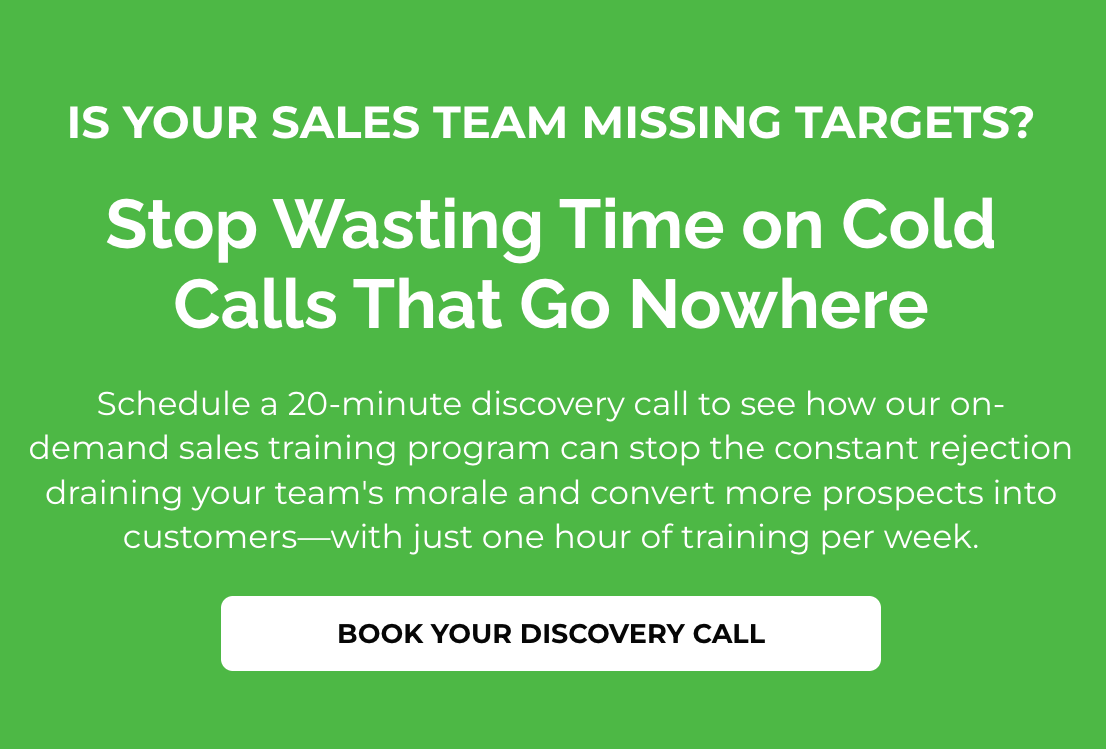Is a Qualified Lead the Same as a Qualified Prospect?

Is a Qualified Lead the Same as a Qualified Prospect?
Assuming a qualified lead is the same as a qualified prospect is one of the many aspects that cause sales reps to have a sales pipeline fail to reach its projected forecast.
In this blog post, I will quickly break down the difference between a qualified lead and a qualified prospect so you can increase your chances of hitting your quota month after month.
There’s a difference between qualifying a lead and having a qualified prospect.
A qualified lead has specific KPIs (Key Prospecting Indicators) for your product/service.
If you are cold-calling, it’s imperative to know how to build a prospecting list of qualified leads that match your ICP (Ideal Customer Profile)
One of the fastest ways to burnout in sales is to make cold calls to unqualified leads.
Here’s one key area on how to solve that:
Knowing What a Qualified Lead Looks Like
The only reason your company is in business is that they solve specific problems for other companies. You have to know what those top three problems are and understand what KPIs make up your company’s targeted audience.
Here are the standard metrics to use:
1) Company Size: How many employees, on average, do your best clients have?
Sure, you can say, “We help everyone from small businesses to Enterprise,” and that may be true… but my question asked you to look at your “best” clients, which clients pay the most, the fastest, the easiest, that do repeat business with you, etc.
2) Location: Where are most of your “best” clients located? USA, CANADA, UK?
Let’s say it’s all USA-based. What state? What are the top 3 states?
3) Industry/Vertical:
According to this post here, LinkedIn has a list of 148 categories. Here are a few examples:
- Information Technology and Services
- Hospital & Health Care
- Financial Services
- Accounting
- Computer Software
Knowing the top 3 verticals your best clients come from will give you a significant advantage when making cold calls.
These are just a few examples of the criteria you can use to determine if a lead is “qualified to be considered a suspect.”
Knowing and building your lead list around specific criteria that match your best clients will help you be more effective in your outreach.
Qualifying the Prospect
Now that you have your list of qualified leads (suspects), setting the appointment to give a presentation or do a demo would be the wrong move.
A prospect must have three conditions to be considered “qualified,” The only way to accomplish that is to ask the right questions at the right time.
Here are the three things you need to uncover to qualify the prospect:
1) Does a problem exist that your solution can solve?
Understand that I’m not saying the prospect has to be aware of the problem – yet. But there has to be a problem you can help solve. You will need to engage the prospect in a conversation and ask questions to identify if a problem exists.
2) You must uncover the prospect’s role in the decision-making process.
You can NOT 100% guarantee their “authority” in the decision-making role based on one’s TITLE alone. Each company has its purchasing process.
Sometimes that means one person has the final say, and other times multiple people will be involved, and sometimes, people you think should have the power have none.
Part of the qualifying process is identifying your prospect’s role in decision-making.
3) The last piece to the qualifying puzzle is:
Can they afford your solution should they decide they want it? If you are speaking to a decision-maker who has a problem and wants your solution to solve it but couldn’t afford your solution (under any circumstances), you don’t have a qualified prospect.
That could change down the road, but they are not qualified in the here and now.
It’s up to you how many “not yet qualified” prospects you want to have in your monthly pipeline. I prefer to have my drip marketing campaigns do their job with those leads while I continue to have conversations with prospects with all three pieces to the qualifying puzzle.
In all three of these critical steps, the only way I know how to uncover each one is to have a conversation with my prospect and know which qualifying questions to ask and when to ask them.
This is why having an interest-piquing opening value statement is so important. If you can’t pique their interest (via phone, voicemail, or email), you never get to the qualifying phase.
Getting to the “qualifying phase” is one of the most challenging assignments for salespeople. When you get your prospect on the phone, make sure you already know what questions to ask, when to ask them, and how to ask them with the proper tone/voice inflection.
You can only say you have a qualified sales prospect when you engage the prospect in a sales conversation and you establish the following:
- Problem recognition;
- Identify that they are the decision-maker, part of the DM team, or at least an Influencer of the decision-making process;
- And can afford your solution should they want it.
They are not qualified if they are missing any of those three things.
Don’t believe me?
Can (or should you) close a prospect that does not need your product/service? If you do, its a great way to get a high RMA (Returned Merchandise Authorization)
Can you close someone that has no part in the decision-making process? Good luck with that.
Are you going to be able to close someone that wants your product/service but can’t afford to pay you?
How many deals do you want in your pipeline that are missing one or more of the three qualifying factors above?
The answer should be zero.
– Michael Pedone
Michael Pedone teaches inside sales teams how to pick up the phone and close business. He is the CEO/FOUNDER of SalesBuzz.com – An online sales training company offering live & on-demand sales consulting.

